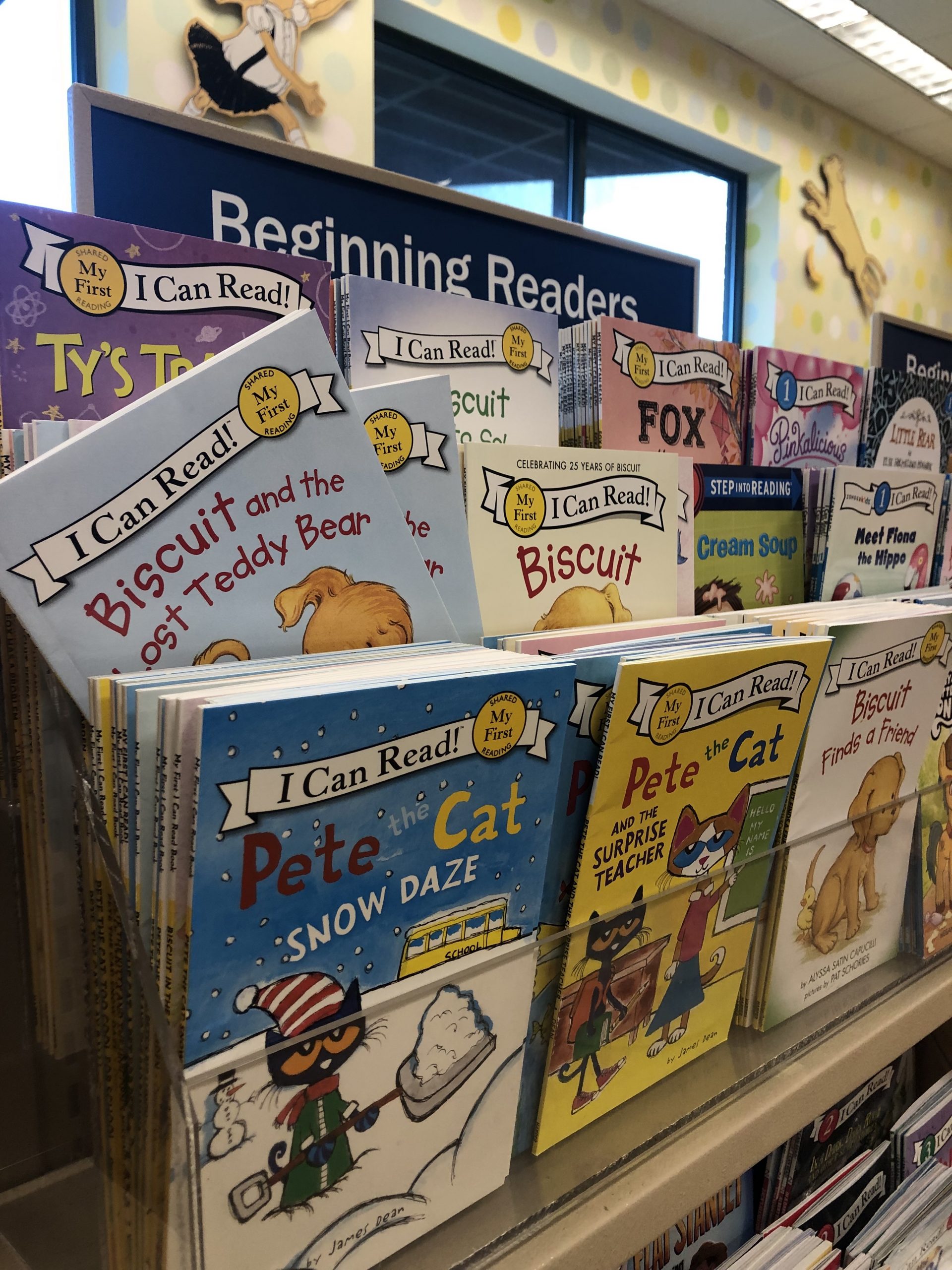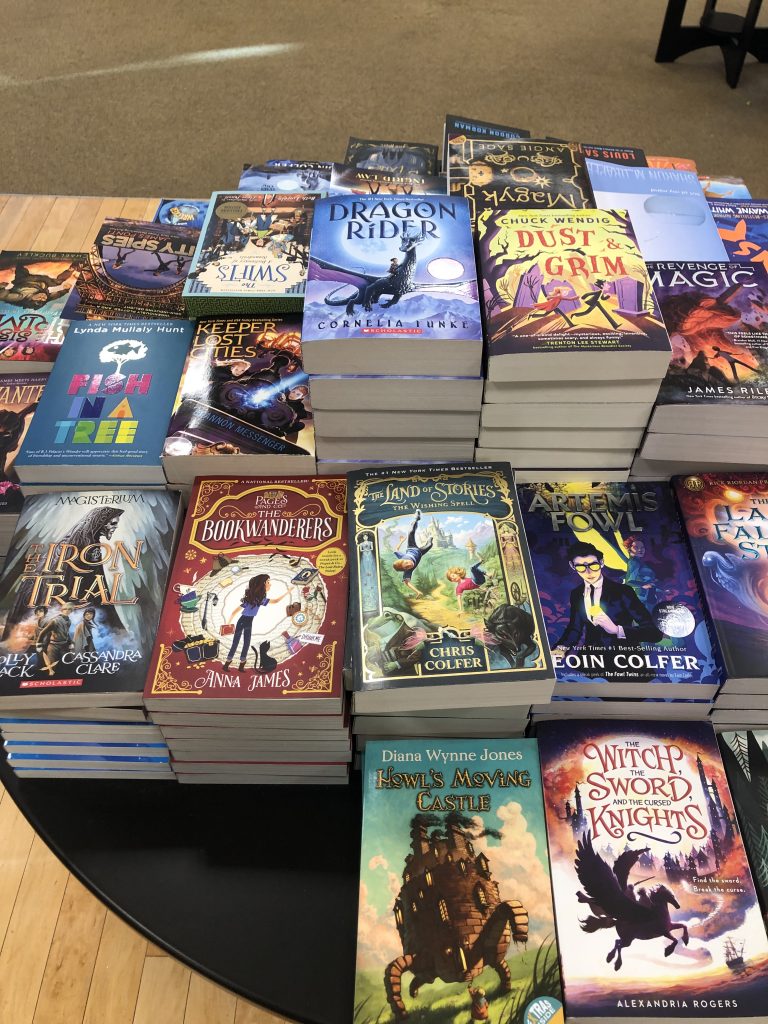
“Beginning Readers” section of Barnes and Nobles located in The Streets at Southpoint (8030 Renaissance Parkway, Durham NC) | Photo by Mary Mungai
Thursday, Feb. 22, 2024
By Mary Mungai
How do you prove that a child is successfully learning how to read?
For Lori Easterlin, the executive director of the Children’s Literacy Project, proving this to parents and teachers is easy, but for grantors, the task proves far more difficult. Explaining the significance of benchmarks passed or deciphering hard-to-understand quantitative data is far from simple. Stories, however, are much easier to explain, and it is this anecdotal evidence that proves how far a child has come.
The Children’s Literacy Project provides free one-to-one tutoring to students from low-income households, primarily during the school day. Services are provided in a wide variety of Durham schools, such as Lakewood Elementary, Hope Valley Elementary and Forest View Elementary. While tutoring mostly occurs at the children’s schools during the day, there are also numerous afterschool programs where the Children’s Literacy Project trains existing volunteers, such as St. Luke’s Episcopal Church, Easterlin said.
At St. Luke’s, the Children’s Literacy Project often trains LEAP volunteers., The LEAP Program is an organization that has specialized in literacy instruction, English as a Second Language tutoring and now has its own preschool. Unfortunately, the pandemic forced a pause in this collaboration during the switch to virtual learning, said LEAP Executive Director Megan McCurley.
“Our tutoring program, we just had like capacity wise, we had a hard time kind of keeping everything going because we serve mostly working-class Latino families,” she said. “They had a hard time with the transition to digital and to online, and so that was a lot of the reason that a lot of our families took a pause. We took a pause.”
During the pandemic, LEAP switched to using a computer-based intervention program called Raz-Kids. McCurley explained that while this intervention program had many benefits, it was mostly beneficial for children who were already reading, but struggled with fluency or comprehension. But it didn’t help children who were still struggling with one of the foundations of reading, known as phonological awareness, which teaches them to identify and manipulate the sounds of letters and turn them into words .
For older kids who struggle with reading, the Children’s Literacy Project model of intervention is especially helpful because it improves both their literacy and comprehension skills, McCurley said.
“They can comprehend lots of things but their foundational, like technical reading skills, are so hard for them that they can’t understand what they’re reading because they’re spending so much of their attention, just like getting through the words,” she said.

For LEAP, this collaboration is about differentiated learning. Each child has different needs, and those who require the help of Raz-Kids should have the same amount of assistance as those who need the Children’s Literacy Project, said McCurley. As they get ready to train volunteers again, they offer inclusive literacy interventions as well, a goal which is shared by the Children’s Literacy Project.
One long-term goal is to train high school volunteers from Durham Public Schools – if DPS could afford it, said Easterlin. Currently, high school volunteers come from Durham Academy and Trinity School of Durham and Chapel Hill, but these opportunities have the potential to be expanded to include other high schools as well.
“I love Durham Academy, I love Trinity School, but, you know, everybody who goes there has some kind of privilege of some sort, and sometimes I think the reputation of us in the private schools could be much more inclusive and open,” she said. “So, what we’re going to do is find a high school and an elementary school and match them up, train the high schoolers, then observe the elementary schoolers after lunch and that could spread all around Durham, which would be nice.”
Creating these sorts of bonds across Durham schools could help students by creating a stronger network of resources, especially during shared disruptions. Easterlin explained how the disruption in education that occurred during the COVID-19 pandemic has continued to impact student progress. And the recent strikes within the Durham school system have only worsened the situation.
“But the reading scores aren’t going up a lot for this for national testing and state testing. That’s a little bit concerning, but I’ve also done some reading that says this is not a quick fix,” she said.
Despite post-pandemic effects and recent disruptions at school, students are still progressing, Easterlin explained. Transportation, in particular, was an issue for both children and parents.
“And the first day of the strike, we went to tutor at Lakewood and of the eleven children we usually see there were only five there because the other six couldn’t get to school,” she said.
Edited by Ava Dobson